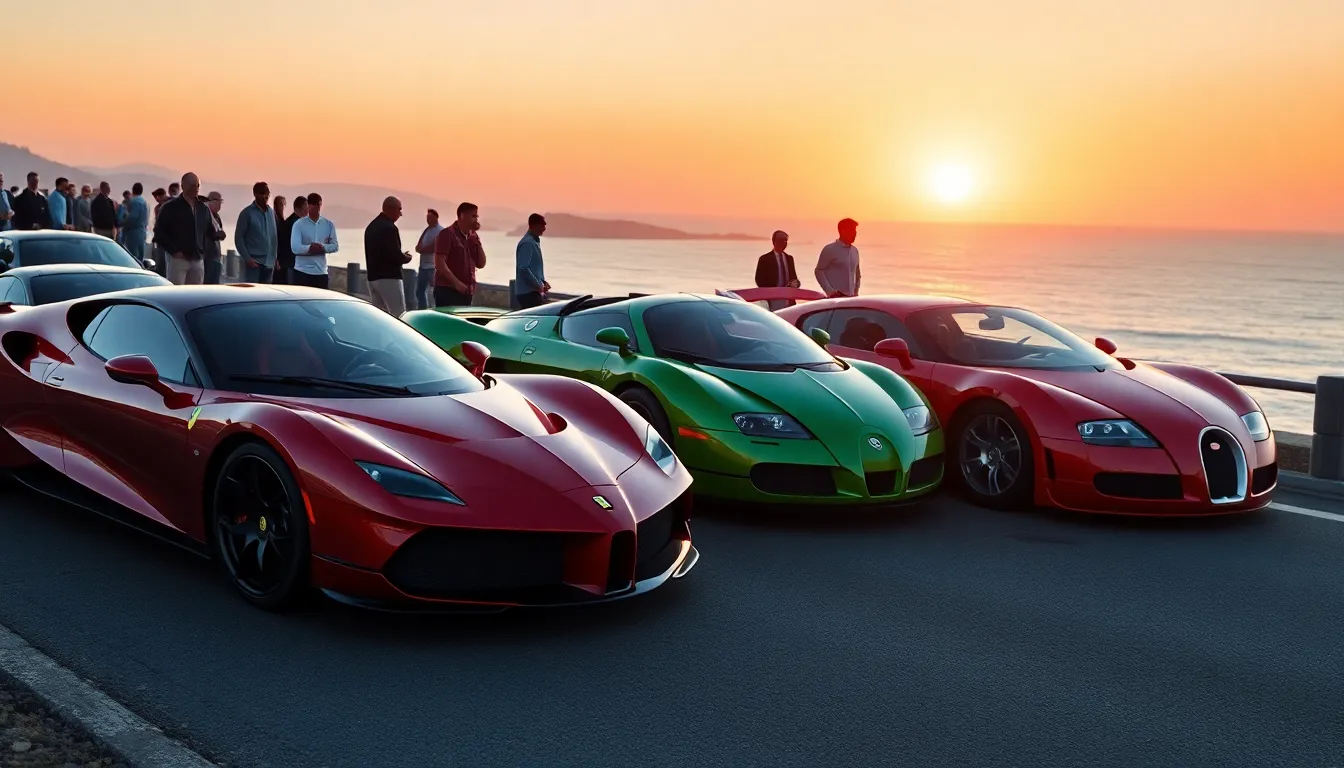We’ve all felt that rush when spotting an incredible car on the road – the sleek lines that make our hearts skip a beat or the distinctive engine roar that turns heads from blocks away. Amazing cars aren’t just machines; they’re rolling works of art that represent the pinnacle of human engineering and design innovation.
From legendary supercars that push the boundaries of speed to luxurious vehicles that redefine comfort, we’re living in an extraordinary era of automotive excellence. Today’s amazing cars blend cutting-edge technology with breathtaking aesthetics, creating experiences that go far beyond simple transportation.
Whether you’re passionate about classic muscle cars, mesmerized by modern hypercars, or fascinated by groundbreaking electric vehicles, we’ll explore the most remarkable automobiles that continue to shape our roads and capture our imaginations. Get ready to discover what makes these mechanical marvels truly amazing.
Most Iconic Supercars That Redefined Amazing Cars
These legendary supercars transformed our understanding of what amazing cars could achieve through groundbreaking technology and performance.
Ferrari LaFerrari: Hybrid Hypercar Excellence
Ferrari LaFerrari revolutionized the hypercar industry when it debuted in 2013 with its innovative hybrid powertrain. This masterpiece combines a 6.3-liter V12 engine with an electric motor to produce an astounding 963 horsepower. We witnessed Ferrari’s commitment to environmental consciousness without sacrificing their racing heritage through this remarkable engineering feat.
The LaFerrari’s carbon fiber construction keeps its weight at just 3,495 pounds while delivering incredible structural rigidity. Active aerodynamics adjust automatically to optimize downforce and reduce drag at different speeds. Ferrari limited production to only 499 units, making this hybrid hypercar one of the most exclusive amazing cars ever created.
Performance figures speak volumes about this Italian masterpiece’s capabilities. Zero to 60 mph acceleration takes just 2.4 seconds, while the top speed reaches 217 mph. The hybrid system provides instant torque delivery that traditional engines simply can’t match.
Bugatti Veyron: Speed Engineering Marvel
Bugatti Veyron shattered speed barriers and redefined what we considered possible in automotive engineering when it launched in 2005. This French hypercar features an 8.0-liter quad-turbocharged W16 engine producing 1,001 horsepower in its original form. We’ve never seen such extreme engineering dedicated to pure speed in amazing cars before the Veyron’s arrival.
The Veyron’s top speed of 253.81 mph held the production car industry record for years. Ten radiators keep the massive engine cool during high-speed runs, while special Michelin tires can withstand the extreme forces generated at maximum velocity. Bugatti invested over $1.6 billion in developing this speed marvel.
Advanced all-wheel drive and aerodynamic systems work together to maintain stability at incredible speeds. The car automatically lowers its ride height and extends a rear spoiler when approaching maximum velocity. Only 450 Veyron units were produced across all variants, cementing its status among the rarest amazing cars.
McLaren P1: Track-Focused Innovation
McLaren P1 represents the pinnacle of track-focused hybrid technology in amazing cars through its race-derived engineering. This British hypercar combines a 3.8-liter twin-turbo V8 with an electric motor to generate 903 horsepower. We see McLaren’s Formula 1 expertise translated directly into road car innovation with the P1’s advanced systems.
The P1’s carbon fiber monocoque weighs just 198 pounds while providing exceptional safety and rigidity. Active suspension adapts continuously to track conditions, while the DRS (Drag Reduction System) borrowed from F1 reduces drag on straightaways. McLaren limited production to 375 units, ensuring exclusivity among amazing cars enthusiasts.
Track performance capabilities set the P1 apart from other supercars in its class. Nürburgring lap times under seven minutes demonstrate this hypercar’s incredible circuit prowess. The electric motor provides instant torque fill while the V8 spools up, eliminating turbo lag completely.
Revolutionary Electric Amazing Cars Changing the Game
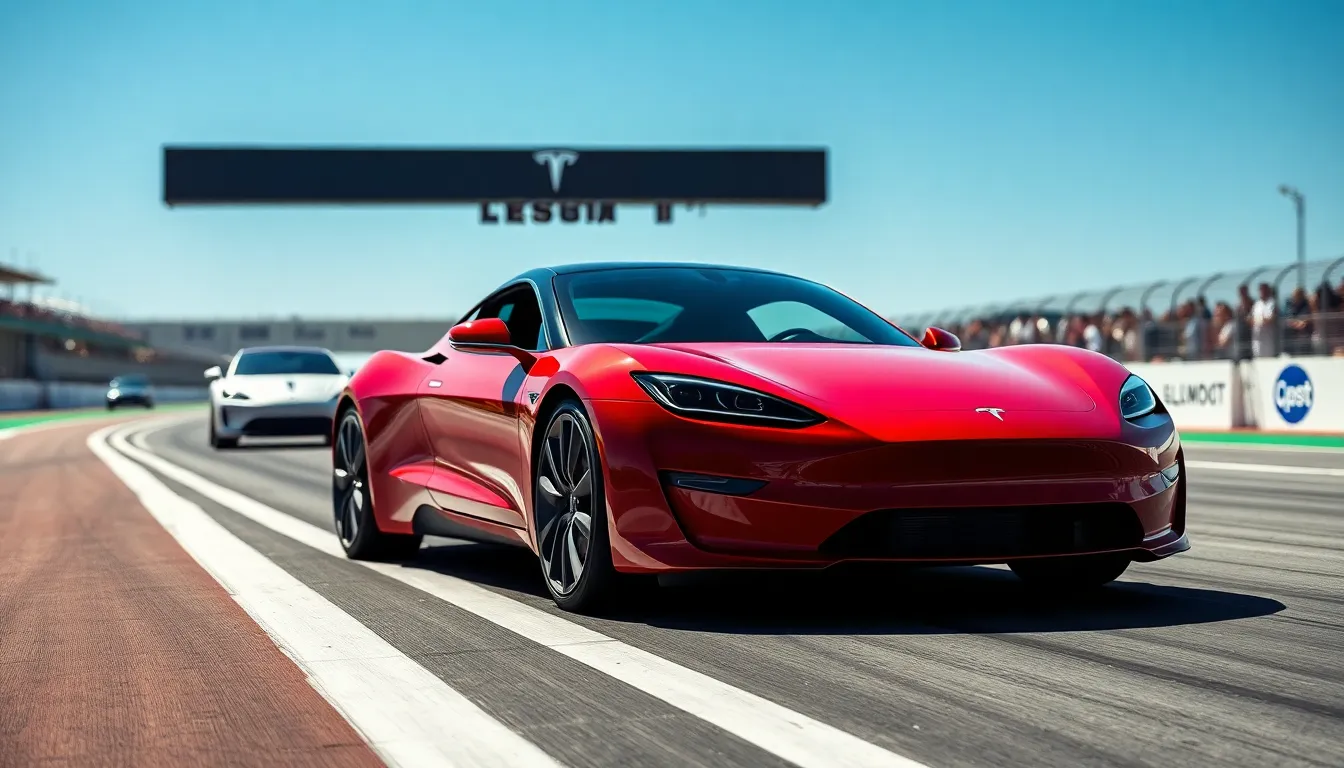
Electric vehicles have evolved beyond eco-friendly transportation into breathtaking performance machines that rival traditional supercars. These amazing cars combine cutting-edge technology with stunning acceleration and luxury features.
Tesla Roadster: Pioneering Electric Performance
Tesla Roadster stands as the original electric sports car that sparked the EV revolution in 2008. The upcoming second-generation Roadster promises mind-bending specifications with 0-60 mph acceleration in just 1.9 seconds and a top speed exceeding 250 mph. We’re witnessing Tesla’s bold claim of a 620-mile range powered by a 200 kWh battery pack that redefines electric vehicle capabilities.
SpaceX cold gas thrusters will potentially equip this amazing car with rocket technology for enhanced performance and handling. Production models are expected to feature a removable glass roof and seating for four passengers even though its sports car design. The Roadster’s tri-motor all-wheel-drive system delivers torque vectoring that surpasses traditional combustion engines in precision and response.
Rimac Nevera: Croatian Electric Beast
Rimac Nevera unleashes 1,914 horsepower through its quad-motor electric powertrain that establishes new benchmarks for electric hypercar performance. This Croatian masterpiece accelerates from 0-60 mph in 1.85 seconds while reaching a quarter-mile time of 8.6 seconds. We’ve seen the Nevera claim 23 industry records including fastest production electric vehicle at 258 mph.
Four independent motors provide torque vectoring capabilities that adjust power delivery 100 times per second for optimal traction and handling. The 120 kWh battery system enables a 340-mile range while supporting 500kW DC fast charging for rapid energy replenishment. Carbon fiber construction keeps the curb weight at 4,740 pounds even though the massive battery pack and four electric motors.
Lucid Air Dream Edition: Luxury Meets Efficiency
Lucid Air Dream Edition delivers 1,111 horsepower while maintaining an EPA-estimated range of 516 miles on a single charge. This amazing car features a dual-motor setup that propels it from 0-60 mph in 2.5 seconds with whisper-quiet operation. We appreciate the Air’s focus on interior space and luxury amenities that rival traditional premium sedans.
Glass roof panels span nearly the entire ceiling to create an airy cabin atmosphere enhanced by a 34-inch curved 5K display. The 118 kWh battery pack supports 300kW DC fast charging that adds 300 miles of range in just 20 minutes. Lucid’s proprietary electric motors are among the most power-dense in the industry at 670 horsepower per motor while maintaining exceptional efficiency ratings.
Classic Amazing Cars That Became Timeless Legends
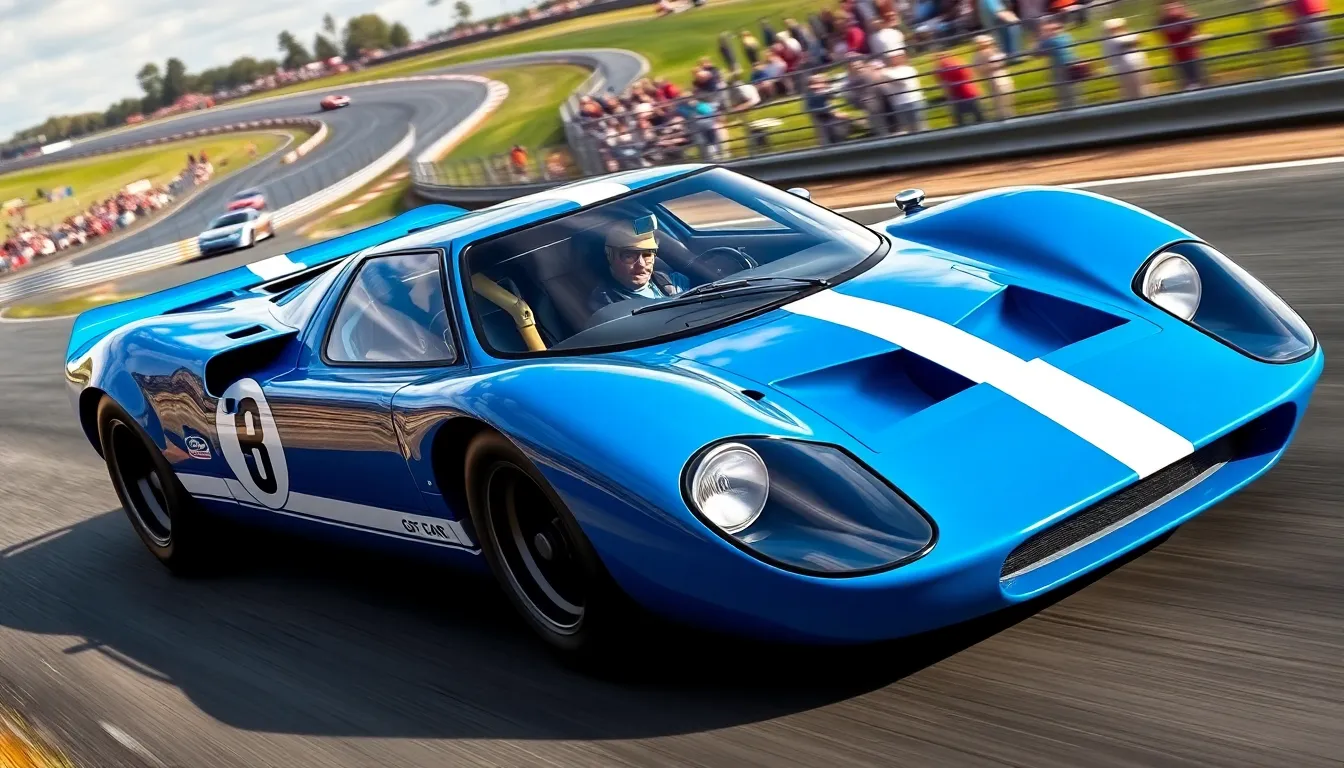
We’ve witnessed revolutionary supercars and groundbreaking electric vehicles reshape automotive excellence, but some amazing cars transcended their era to become immortal icons. These legendary machines established benchmarks that continue inspiring today’s automotive marvels.
Ford GT40: Le Mans Domination Machine
Ford GT40 conquered Le Mans with unprecedented American determination and engineering prowess. Racing against Ferrari’s dominance in the 1960s, this low-slung masterpiece measured just 40 inches tall and featured a powerful 7.0-liter V8 engine producing 485 horsepower.
Victory came decisively when Ford GT40s swept the 1966 Le Mans 24 Hours race, claiming first, second, and third place. This triumph marked the beginning of four consecutive Le Mans victories from 1966 to 1969, establishing Ford’s racing legacy in endurance motorsport.
Design excellence merged aerodynamic efficiency with raw American muscle, creating a car that reached speeds exceeding 200 mph. The GT40’s distinctive bodywork and aggressive stance became the blueprint for future Ford performance vehicles, influencing models like the modern Ford GT that continues this racing heritage.
Lamborghini Miura: First True Supercar
Lamborghini Miura revolutionized automotive design by introducing the industry’s first mid-engine production supercar in 1966. Featuring a transversely mounted 4.0-liter V12 engine producing 350 horsepower, this Italian masterpiece achieved a top speed of 171 mph that shocked the automotive industry.
Innovation emerged from young designers Marcello Gandini, Gian Paolo Dallara, and Paolo Stanzani who created the Miura’s stunning silhouette. The car’s flowing lines, dramatic proportions, and pop-up headlights established the visual language that defines supercars today, inspiring countless manufacturers to adopt similar design philosophies.
Performance capabilities included 0-60 mph acceleration in just 6.7 seconds, making it the fastest production car of its time. This combination of exotic styling, mid-engine layout, and exceptional performance created the supercar template that amazing cars like the Ferrari LaFerrari and McLaren P1 still follow decades later.
Porsche 911: Enduring Design Excellence
Porsche 911 represents automotive design perfection through six decades of continuous evolution and refinement. Since its 1963 debut, this rear-engine sports car has maintained its distinctive silhouette while incorporating modern technology, selling over one million units worldwide.
Engineering brilliance shines through the 911’s unique rear-mounted engine configuration that creates exceptional traction and handling characteristics. Current 911 models range from the base Carrera producing 379 horsepower to the track-focused GT3 RS generating 518 horsepower, demonstrating remarkable performance versatility across the lineup.
Cultural impact extends beyond automotive circles, with the 911 becoming a symbol of success and driving passion. We see its influence in everything from architecture to luxury goods, while its racing achievements include over 29,000 victories worldwide, making it the most successful sports car in motorsport history and cementing its status among amazing cars that define automotive excellence.
Most Expensive Amazing Cars Ever Sold at Auction

When amazing cars reach auction houses, they transform from vehicles into priceless artifacts that shatter financial records. We’ve witnessed extraordinary sales that redefine our understanding of automotive value and collector passion.
1962 Ferrari 250 GTO: Record-Breaking Sale
Ferrari’s legendary 250 GTO stands as the ultimate auction champion, commanding prices that eclipse entire real estate portfolios. We’ve seen this magnificent machine achieve the highest hammer price ever recorded, with chassis #3413GT selling for $48.4 million at RM Sotheby’s in 2018. Racing pedigree drives much of its astronomical value, as this particular example claimed victory at the 1962 Italian National GT Championship.
Production numbers tell the scarcity story, with Ferrari building only 36 examples between 1962 and 1964. Each 250 GTO features a hand-built 3.0-liter V12 engine producing 300 horsepower, wrapped in Scaglietti’s timeless aluminum bodywork. Collectors recognize this model as Enzo Ferrari’s final personal approval before his company’s public transformation, making ownership equivalent to holding a piece of automotive history.
1955 Mercedes-Benz 300 SLR: Racing Heritage Premium
Mercedes-Benz’s 300 SLR represents the pinnacle of 1950s racing technology, with chassis #0008 achieving a remarkable $142 million private sale in 2022 through RM Sotheby’s. We consider this the most expensive car ever sold, reflecting its extraordinary racing DNA from Mercedes’ dominant 1955 motorsport campaign. Stirling Moss piloted this exact vehicle to victory in the Mille Miglia, covering 1,000 miles in just 10 hours and 7 minutes.
Engineering excellence defines every component, from its fuel-injected 3.0-liter straight-eight engine to its advanced space frame construction. Only two road-legal examples exist worldwide, making this 300 SLR Uhlenhaut Coupe rarer than any Ferrari or Bugatti we’ve discussed. Mercedes originally created these vehicles as engineering test beds, never intending them for public sale until decades later.
Bugatti Type 57SC Atlantic: Art Deco Masterpiece
Bugatti’s Type 57SC Atlantic embodies automotive art at its most refined, with estimates suggesting values exceeding $100 million if one appeared at auction today. We know of only four examples ever produced, each featuring the distinctive dorsal seam running down the car’s spine. Jean Bugatti himself designed this masterpiece in 1936, creating what many consider the most beautiful automobile ever conceived.
Craftsmanship reaches unprecedented levels in every Atlantic detail, from its electron bodywork to its supercharged 3.3-liter straight-eight engine producing 200 horsepower. One chassis remains missing since Industry War II, adding mystique to an already legendary model. Fashion designer Ralph Lauren owns the most famous surviving example, which has never appeared at public auction but would likely establish new price records if it ever did.
Amazing Cars With Groundbreaking Technology Features
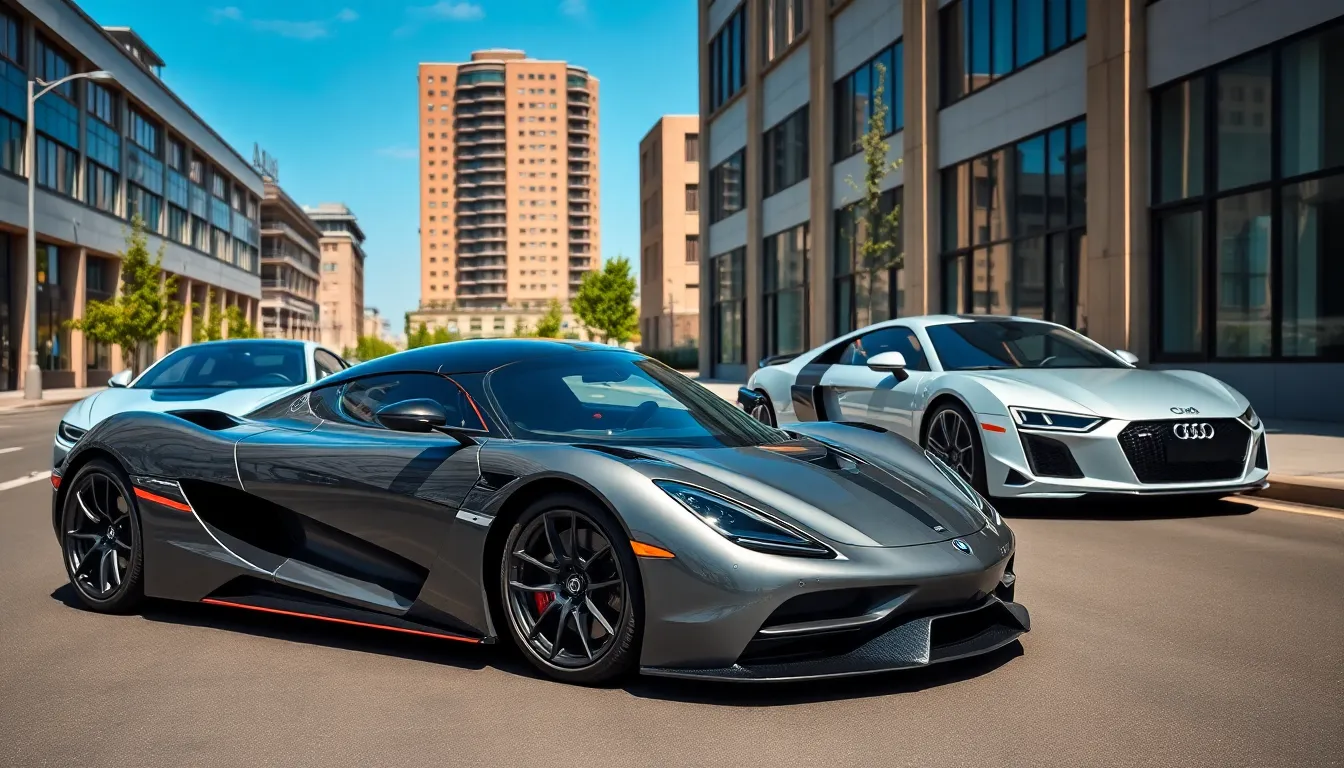
Technology continues to push automotive boundaries in ways that seemed impossible just decades ago. We’re witnessing revolutionary innovations that transform how cars deliver power, integrate hybrid systems, and make supercar performance accessible to daily drivers.
Koenigsegg Regera: Direct Drive Innovation
Koenigsegg Regera revolutionizes automotive transmission technology through its groundbreaking direct drive system. This Swedish hypercar eliminates the traditional gearbox entirely, connecting its 5.0-liter twin-turbo V8 engine directly to the rear axle while three electric motors provide additional power and acceleration assistance.
Performance specifications showcase the system’s effectiveness:
| Feature | Specification |
|---|---|
| Total power output | 1,500 horsepower |
| 0-60 mph acceleration | 2.8 seconds |
| Electric-only range | 22 miles |
| Top speed | 251 mph |
Direct drive technology creates an incredibly smooth power delivery that traditional transmissions can’t match. We see this innovation eliminating gear shifts completely, allowing the Regera to accelerate seamlessly from standstill to top speed. Electric motors fill the torque gaps at low RPMs, ensuring instant throttle response and eliminating traditional turbo lag entirely.
BMW i8: Futuristic Hybrid Design
BMW i8 pioneered the integration of cutting-edge hybrid technology with stunning visual design that still looks futuristic today. This German sports car combines a 1.5-liter three-cylinder turbocharged engine with an electric motor, creating a total output of 374 horsepower while maintaining impressive fuel efficiency.
Key technological innovations include:
| Technology | Benefit |
|---|---|
| Carbon fiber body | 50% weight reduction vs steel |
| Scissor doors | Enhanced accessibility and style |
| Laser headlights | 600-meter beam distance |
| eDrive mode | Pure electric driving up to 23 miles |
Hybrid powertrain architecture places the electric motor at the front axle and combustion engine at the rear, creating an all-wheel-drive system that enhances both performance and efficiency. We observe how the i8’s design language influenced an entire generation of hybrid sports cars, proving that eco-friendly technology doesn’t require sacrificing visual appeal or driving excitement.
Audi R8: Everyday Supercar Accessibility
Audi R8 democratizes supercar technology by packaging exotic performance features into a surprisingly practical daily driver package. This German supercar utilizes a naturally aspirated 5.2-liter V10 engine that delivers 602 horsepower while maintaining the reliability and usability that Audi owners expect.
Accessibility features that set the R8 apart:
| Feature | Everyday Benefit |
|---|---|
| Dual-clutch transmission | Smooth city driving |
| Magnetic ride suspension | Comfort and sport modes |
| Quattro all-wheel drive | Year-round usability |
| Virtual cockpit display | Digital instrument integration |
Technology integration focuses on making supercar performance approachable rather than intimidating. We find that the R8’s advanced traction management systems allow drivers of varying skill levels to experience its full potential safely. Magnetic dampers adjust suspension stiffness in real-time, transforming the car from a comfortable cruiser to a track-ready weapon with the push of a button.
Fastest Amazing Cars That Break Speed Records
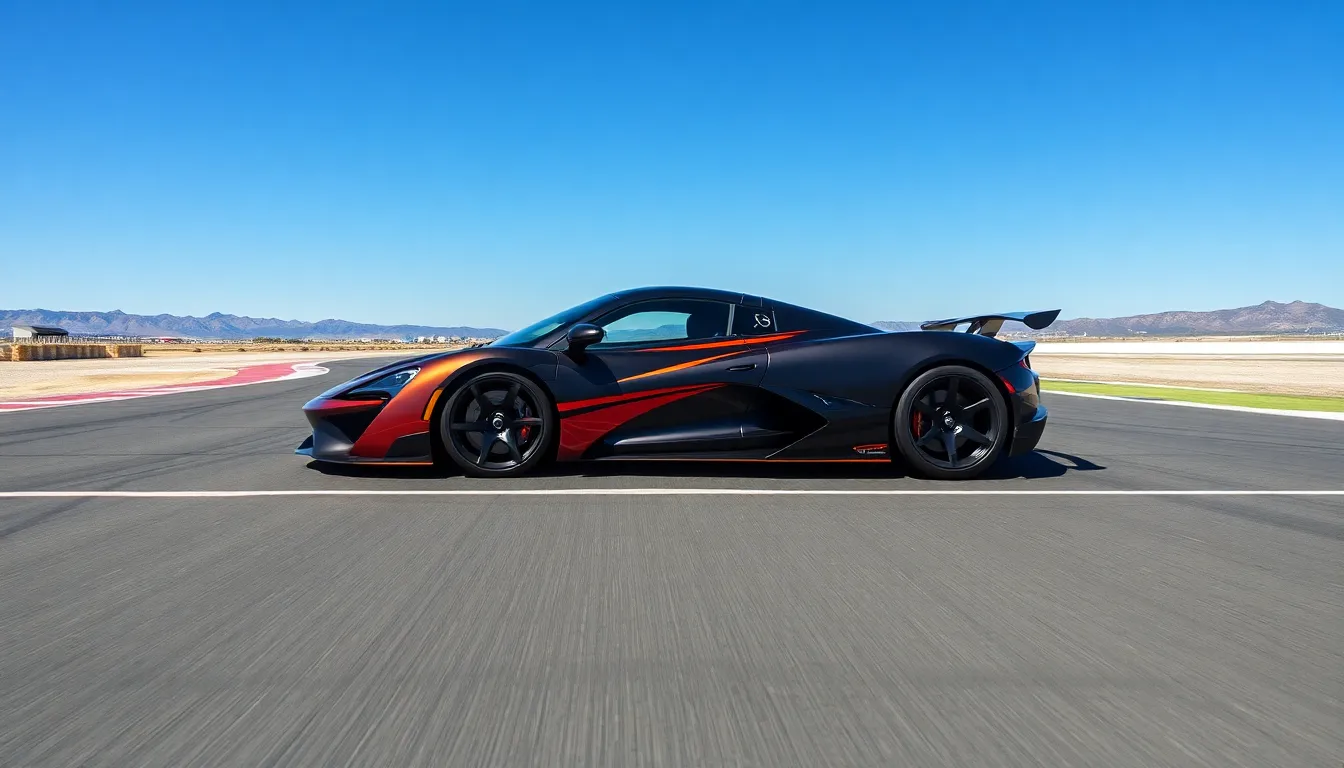
We’re entering the area where automotive engineering pushes beyond conventional limits to achieve unprecedented velocity. These exceptional machines represent the absolute pinnacle of speed-focused design and engineering excellence.
SSC Tuatara: American Speed Champion
SSC Tuatara claims the title of industry’s fastest production car with its official top speed of 282.9 mph, establishing American automotive supremacy in the hypercar arena. This Washington-built marvel generates 1,750 horsepower from its twin-turbocharged 5.9-liter V8 engine, utilizing advanced carbon fiber construction and sophisticated aerodynamics to achieve its remarkable performance figures.
Acceleration capabilities demonstrate the Tuatara’s incredible power delivery, launching from 0-60 mph in just 2.5 seconds and reaching 0-100 mph in 5.1 seconds. SSC designed the vehicle’s active aerodynamics system to automatically adjust between high-downforce and low-drag configurations, optimizing performance for different driving conditions. Wind tunnel testing and computational fluid dynamics shaped every surface of this speed machine, resulting in a coefficient of drag of just 0.279 in its high-speed configuration.
Hennessey Venom F5: Texas-Built Rocket
Hennessey Venom F5 targets a theoretical top speed of 311 mph through its custom-built twin-turbocharged 6.6-liter V8 engine that produces an astounding 1,817 horsepower. Texas-based Hennessey Performance Engineering crafted this hypercar with a carbon fiber monocoque chassis weighing just 2,998 pounds, creating an extraordinary power-to-weight ratio of 1,298 horsepower per ton.
Track-focused engineering defines every aspect of the Venom F5’s construction, from its Michelin Pilot Sport Cup 2 tires to its advanced traction control systems. Hennessey incorporated Formula 1-inspired suspension technology and carbon ceramic brakes capable of withstanding extreme thermal loads during high-speed runs. Testing protocols include validation at NASA’s Vehicle Assembly Building to verify the car’s aerodynamic predictions and structural integrity at maximum velocity.
Koenigsegg Jesko Absolut: Aerodynamic Perfection
Koenigsegg Jesko Absolut represents the Swedish manufacturer’s ultimate expression of low-drag aerodynamics, designed specifically to achieve a projected top speed of 330 mph. This track-bred hypercar eliminates the standard Jesko’s large rear wing and active aerodynamics in favor of streamlined bodywork that reduces drag coefficient to an incredible 0.278.
Swedish engineering excellence shines through the Jesko Absolut’s innovative Light Speed Transmission, a nine-speed multi-clutch system that enables instantaneous gear changes without interrupting power delivery. Koenigsegg’s 5.0-liter twin-turbocharged V8 engine produces up to 1,600 horsepower on racing fuel, while advanced carbon fiber construction keeps total weight to just 3,064 pounds. Computer simulations and extensive wind tunnel testing validated the car’s ability to maintain stability and control at extreme velocities, making it a true testament to Scandinavian automotive precision.
Most Beautiful Amazing Cars Based on Design Excellence
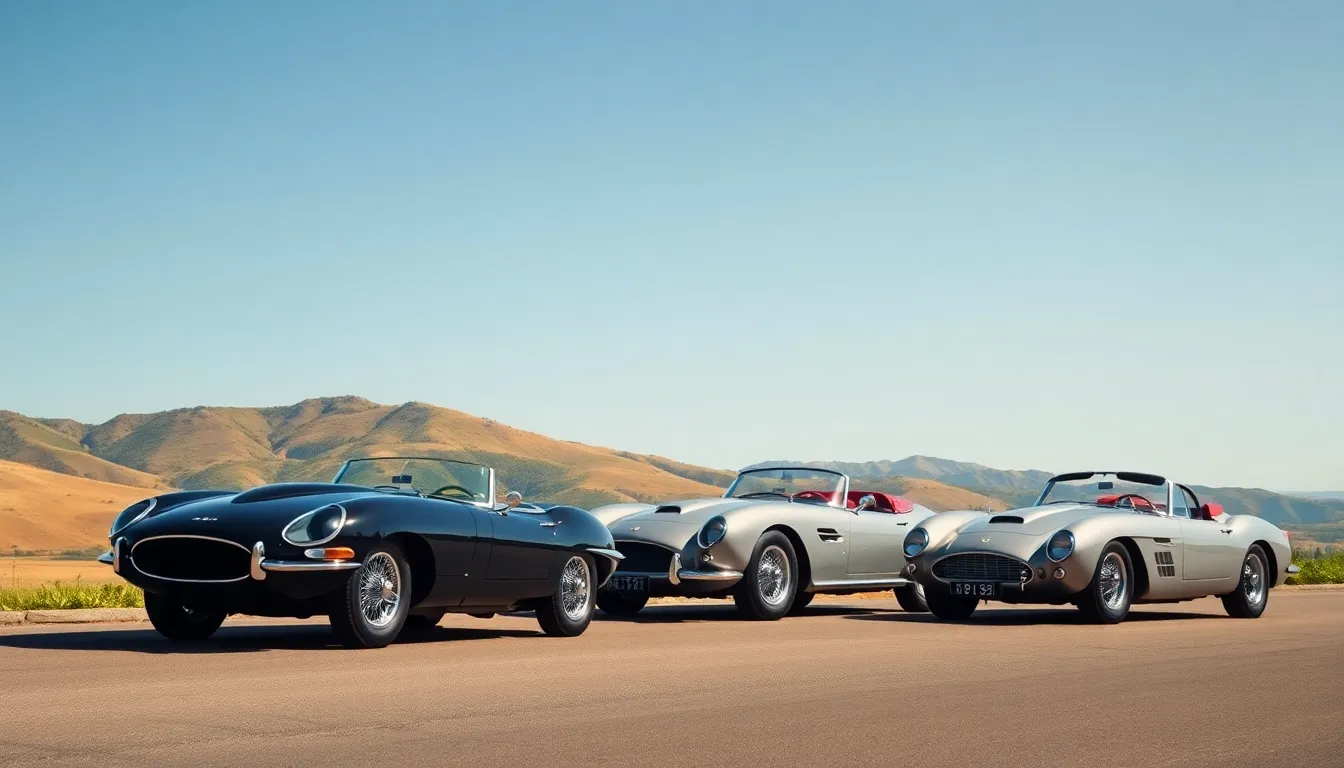
While speed and technology captivate our imagination, true automotive artistry emerges when form and function unite in perfect harmony. We’ve witnessed incredible engineering marvels, but now let’s explore cars that transcend mechanical excellence to become rolling sculptures.
Jaguar E-Type: British Elegance Personified
British automotive design reached its artistic pinnacle with the Jaguar E-Type, a stunning creation that redefined automotive beauty in 1961. Enzo Ferrari himself called it “the most beautiful car ever made,” establishing its legendary status among amazing cars worldwide. The E-Type’s elongated hood stretches gracefully over its 4.2-liter straight-six engine, creating proportions that automotive designers still study today.
Stunning curves flow seamlessly from the distinctive oval grille to the fastback rear window, eliminating any harsh lines or abrupt transitions. We see how the car’s monocoque construction enabled Jaguar’s designers to create that impossibly long hood while maintaining structural integrity. Performance matched its breathtaking appearance, with the Series 1 E-Type achieving 0-60 mph in just 7 seconds and reaching top speeds of 150 mph.
Interior craftsmanship elevated the E-Type beyond mere transportation into luxury territory. Rich leather seats complemented polished aluminum trim, while the distinctive toggle switches and aircraft-inspired dashboard created an atmosphere of sophisticated engineering. Even today, restored E-Types command prices exceeding $200,000 at prestigious auctions, proving their enduring appeal among collectors worldwide.
Ferrari 250 GT California: Timeless Italian Beauty
Italian passion for automotive artistry reached extraordinary heights with the Ferrari 250 GT California, a masterpiece that embodied la dolce vita spirit. Produced between 1958 and 1963, this convertible grand tourer combined Ferrari’s racing heritage with elegant styling that captured hearts across Hollywood and European society. The California’s Scaglietti-designed bodywork featured graceful curves that emphasized its powerful 3.0-liter Colombo V12 engine beneath.
Distinctive covered headlights gave the front end a sleek, mysterious appearance that became synonymous with 1960s automotive glamour. We observe how the car’s short wheelbase and long hood created proportions that photographers and filmmakers couldn’t resist, leading to appearances in countless movies and magazines. Only 165 examples left Maranello’s factory gates, making each surviving California a precious artifact of automotive history.
Racing pedigree elevated the California beyond beautiful design into performance excellence. Competition versions achieved remarkable success at tracks like Le Mans and Sebring, proving that stunning aesthetics didn’t compromise Ferrari’s commitment to speed. Today’s auction results reflect this perfect marriage of beauty and performance, with pristine examples selling for over $18 million at prestigious sales events.
Aston Martin DB5: James Bond Sophistication
British sophistication found its ultimate expression in the Aston Martin DB5, a car that defined gentleman’s grand touring for generations. Introduced in 1963, this elegant coupe combined Italian styling inspiration from Carrozzeria Touring with distinctly British engineering excellence. The DB5’s aluminum bodywork showcased clean, purposeful lines that avoided unnecessary decoration while maintaining unmistakable presence on any road.
Superleggera construction methods created lightweight strength that enhanced both performance and handling characteristics throughout the car’s impressive power band. We recognize how the DB5’s 4.0-liter straight-six engine produced 282 horsepower, enabling 0-60 mph acceleration in 8.1 seconds and a top speed of 145 mph. These specifications placed it among the fastest production cars of its era while maintaining the refinement expected from Newport Pagnell’s craftsmen.
Hollywood immortalized the DB5 through its starring role alongside Sean Connery’s James Bond in “Goldfinger.” Ejector seats, rotating number plates, and bulletproof glass transformed this already stunning automobile into cinema history’s most famous car. Modern collectors pay premium prices exceeding $1.2 million for pristine examples, recognizing the DB5’s unique combination of automotive excellence and cultural significance that continues inspiring amazing cars today.
Conclusion
We’ve journeyed through the extraordinary industry of automotive excellence where engineering meets artistry. From the groundbreaking hypercars pushing speed barriers to the elegant classics that defined generations these machines represent humanity’s relentless pursuit of perfection.
Today’s automotive industry offers unprecedented diversity. Whether you’re drawn to the silent power of electric hypercars the thunderous roar of traditional supercars or the timeless beauty of vintage classics there’s never been a better time to appreciate automotive craftsmanship.
These amazing cars remind us that transportation can transcend mere functionality. They inspire us dream with us and continue pushing the boundaries of what’s possible on four wheels.
Frequently Asked Questions
What makes supercars like the Ferrari LaFerrari so special?
Supercars like the Ferrari LaFerrari represent the pinnacle of automotive engineering, combining cutting-edge technology with stunning design. The LaFerrari features a hybrid system with a 6.3-liter V12 engine and electric motor producing 963 horsepower, showcasing Ferrari’s innovation and environmental consciousness while delivering breathtaking performance.
How fast can the Bugatti Veyron actually go?
The Bugatti Veyron can reach a top speed of 253.81 mph, thanks to its powerful 8.0-liter quad-turbocharged W16 engine. This incredible speed held the production car record for years, making the Veyron a legendary benchmark in automotive performance and engineering excellence.
Are electric cars really as fast as traditional supercars?
Yes, modern electric cars can match or exceed traditional supercars in performance. The Tesla Roadster promises 0-60 mph in 1.9 seconds with a top speed over 250 mph, while the Rimac Nevera delivers 1,914 horsepower and accelerates 0-60 mph in just 1.85 seconds.
Why are classic cars like the Ford GT40 still important today?
Classic cars like the Ford GT40 established benchmarks that continue inspiring modern automotive design. The GT40’s dominance at Le Mans with four consecutive victories showcased the perfect blend of powerful engineering and aerodynamic design, creating timeless legends that influence contemporary supercars.
What makes some cars worth millions at auctions?
Cars become auction treasures due to their racing pedigree, limited production, and historical significance. The 1962 Ferrari 250 GTO sold for $48.4 million, while the 1955 Mercedes-Benz 300 SLR reached $142 million, driven by their exceptional racing heritage and engineering excellence.
How is automotive technology changing modern cars?
Modern cars feature groundbreaking innovations like the Koenigsegg Regera’s direct drive system and hybrid powertrains. These technologies enhance performance while improving efficiency, with cars like the BMW i8 combining turbocharged engines with electric motors for both power and environmental responsibility.
Which car currently holds the world speed record?
The SSC Tuatara currently claims the fastest production car title with a top speed of 282.9 mph, powered by a twin-turbocharged 5.9-liter V8 engine producing 1,750 horsepower. However, several manufacturers continue pushing speed boundaries with even faster theoretical speeds.
What defines the most beautiful cars ever made?
Beautiful cars combine stunning design with exceptional performance and cultural significance. Icons like the Jaguar E-Type, Ferrari 250 GT California, and Aston Martin DB5 showcase perfect proportions, elegant styling, and timeless appeal that transcends automotive trends and continues captivating enthusiasts worldwide.

